Having the right measurements helps to reliably evaluate SEO success. This blog post is about why Domain Authority, Authority Score and Domain Rating can be misleading and encourage incorrect decisions.
The desire for performance metrics, measurability, is as old as it is helpful. The economist Peter F. Drucker once said: “If you can’t measure it, you can’t manage it”. Since Google itself does not produce any performance indicators, it is obvious that software providers try to fill this vacuum with their own products.
Even though such metrics always end up producing a value, the calculation methods and, importantly, the underlying databases differ significantly. Let’s jump right in:
What are Domain Authority, Authority Score and Domain Rating?
If you look at the public help pages from the providers, the explanation of the metrics reads, at first glance, as exactly what you are looking for. For example, Moz writes :
Domain Authority (DA) is a search engine ranking score developed by Moz that predicts how likely a website is to rank in search engine result pages.
Semrush ‘s explanation of the similar-sounding Authority Score sounds even more comprehensive and useful:
Semrush Authority Score is our compound metric used for measuring a domain’s or webpage’s overall quality and SEO performance
Anyone who can measure the “overall quality” of a website is, at least rhetorically, reaching for the stars. Ahrefs doesn’t dive too deeply into the marketing bag of tricks when describing the metric and uses a comprehensible description:
Domain Rating (DR) shows the strength of a website’s backlink profile compared to the others in our database on a 100-point scale. It’s essentially a less granular version of Ahrefs Rank (AR
In essence, all three providers promise a key figure to evaluate and compare a domain from an SEO point of view. Sounds good and useful so far. Let’s look at how these metrics are calculated.
How are these metrics calculated?
On the linked help pages above, the three providers also reveal more about how these key figures are actually calculated.
Moz does this based on its own link index (“Domain Authority is based on data from our Link Explorer web index”), Semrush does the same (“The second algorithm uses backlink data”) and, unsurprisingly, the calculation from Ahrefs is also based on links.
In view of the fact that Moz positioned its value as an alternative to Google PageRank at the time, this is understandable and consistent. The other two providers then copied adapted this procedure.
Let’s make it clear: Domain Authority as well as Authority Score and Domain Rating are proprietary key figures from three providers, all of which are calculated on the basis of link indices crawled by the providers themselves.
How does Google actually do it?
To assess these metrics, we need to take a step back and first understand how Google crawls the web. In the following diagram you can see what this looks like:
The outer circle shows the entire Internet, which includes all theoretically accessible URLs. This includes the dark web, content behind access controls, content that can only be accessed by submitting forms, content that can only be accessed from certain regions and much more.
However, Google only covers a part of the entire Internet (the middle circle) because the Googlebot has no access to the full content range. Either because it doesn’t know it’s there, because it’s not relevant enough for resources to be spent on it or for numerous other reasons.
From this crawled content, Google again only uses a selection (inner circle) for its link index. Google is very good at not rating unnatural links. Disallow files are also evaluated, the numerous versions of nofollow attributes are taken into account and more.
The take-away: we don’t know how big the internet is. We also do not know which part of it is recorded by Google. We know even less about which of the indexed links are used by Google for ranking.
How do Domain Authority, Authority Score and Domain Rating fit into this?
To understand how the three scores from Moz, Semrush, and Ahrefs fit into this concept, let’s take the chart from above and plot these three providers’ own link indices as well:
The conceptual problems that arise from this approach are quite obvious in the diagram:
- Link Index Size : Google (and Bing, Yandex) crawl more URLs than individual SEO software vendors. The size of the link index of SEO software does not reach the level of completeness on which Google calculates its rankings.
- Different coverage: Google does not publish which URLs are crawled. The crawlers of the providers will therefore inevitably use a different part of the Internet as a data basis than Google.
- Deviating rating: Even less is known about which links Google evaluates and which it does not. The link indices do not have this knowledge and therefore deviate again from the Google link index.
- No comparability: Even within third-party link indices, they cannot be trusted to map different domains with a constant level of errors. Depending on the environment of the domains, deviations from Google vary in size.
In summary, the overarching problem with metrics calculated on third-party link indexes is that they are not directly related to the Google ecosystem. It is unknown how large the deviation from Google is and one cannot even trust that this deviation is consistent for all domains.
What does it look like in real life?
So much for the theory. What does it look like in practice? An obvious domain for this is digg.com . Launched 10 years ago as a bookmarking and news aggregation site and the domain was able to gain a high number of high-quality links on many domains by integrating the bookmarking widget.
digg.com was able to achieve excellent visibility values on Google in the early days, but is reduced to next to nothing now. Another example, again a bookmarking site, was mister-wong.de which at one point had the visibility level of Wikipedia.
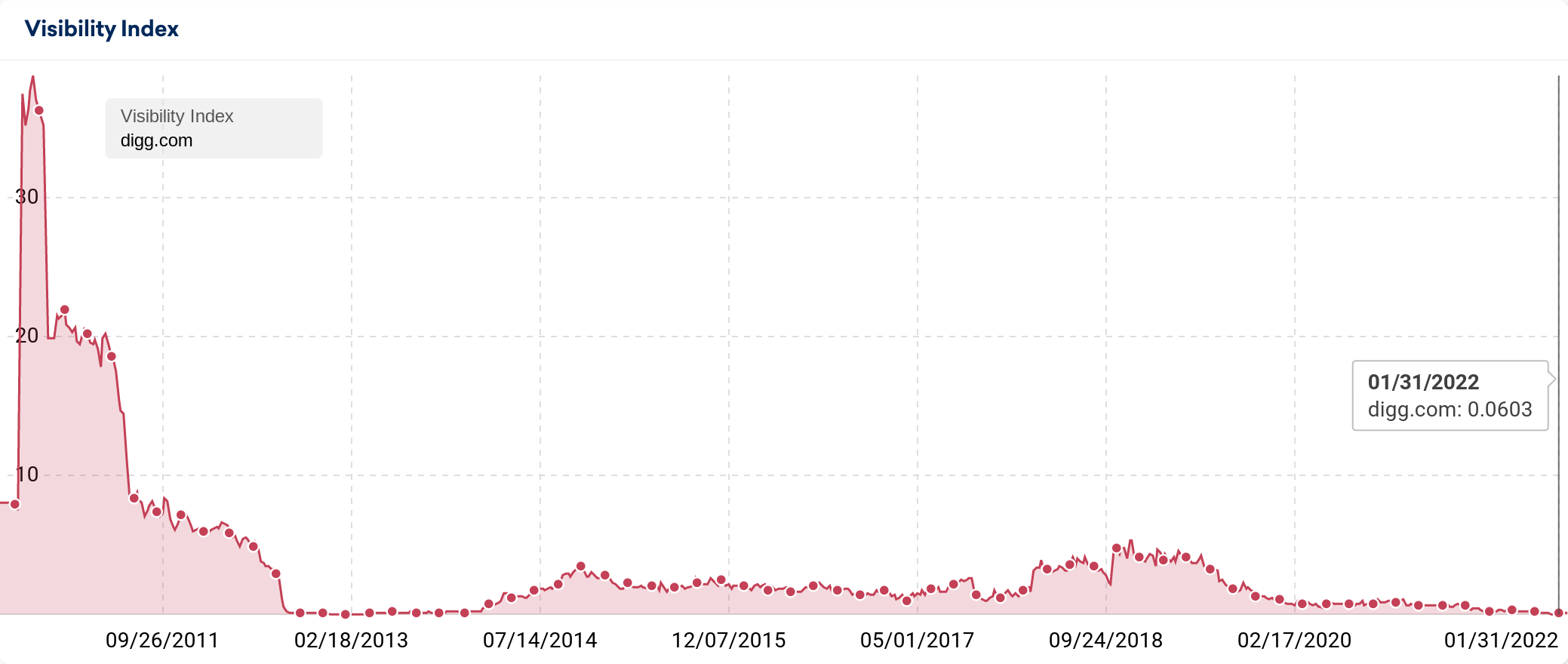
Despite the many high-quality links, the domain was quickly down-rated by Google. All attempts to restart the growth have never led to success in the Google SERPs.
With this prior knowledge, let’s now check how this domain performs in the key figures of the three SEO tools. At Ahrefs, the domain achieves a domain rating of 92 out of 100 points. This is more than one of the top-20 most visible domains, collinsdictionary.com, which has a DR of 82.
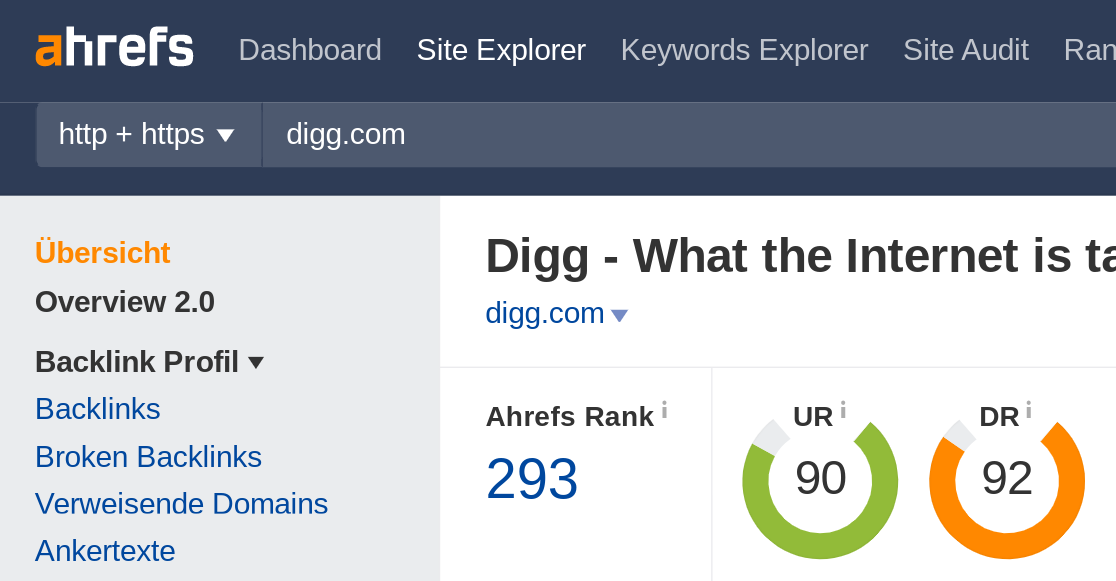
At Semrush, the domain has an authority score of 91 out of 100. Here, too, the value is more than collinsdictionary.com at just 75.
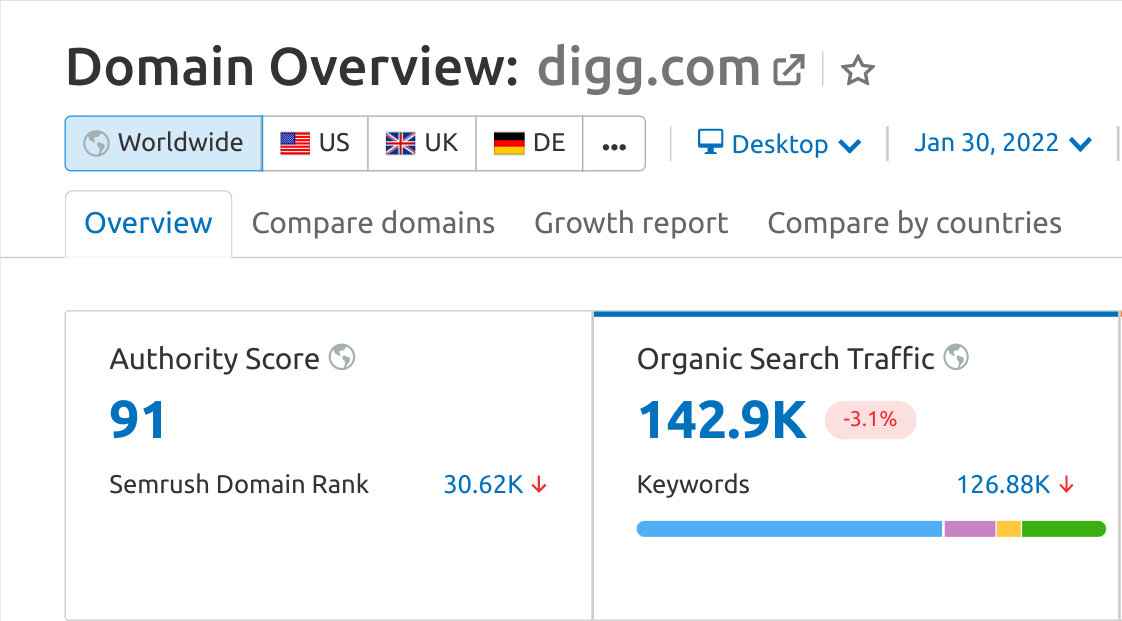
Last but not least, for the sake of completeness, the rating from Moz. Here the domain has a huge domain authority of 92 out of 100. At Moz, the collinsdictionary.com domain has a DA of 87
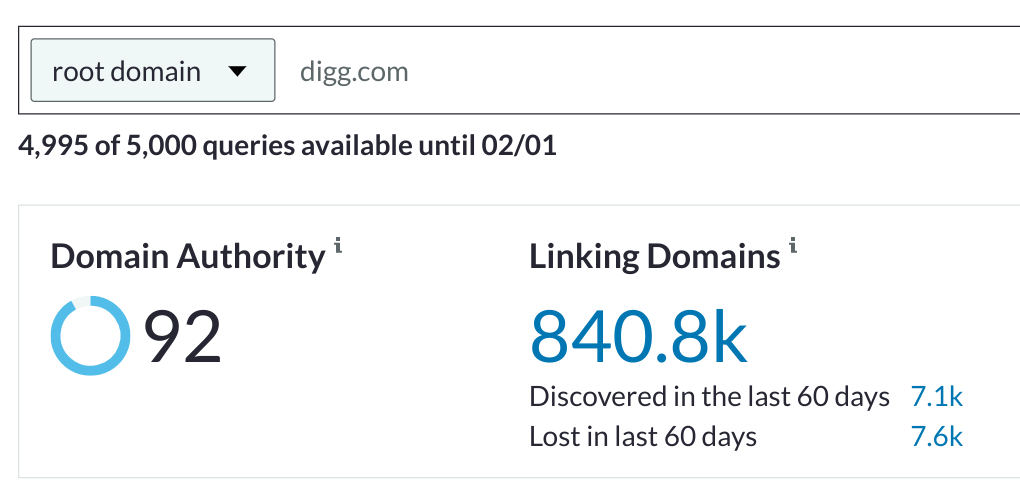
So if you trust the key figures from Moz, Semrush or Ahrefs, the domain digg.com has a similar relevance on Google as the domain collinsdictionary.com. Anyone who has even briefly delved into the topic of SEO will have to agree that this review is gross nonsense.
A link from the domain digg.com will not have the positive effect that comes close to a link from the domain collinsdictionary.com – on the contrary, with a bit of bad luck, Google can even rate such links negatively.
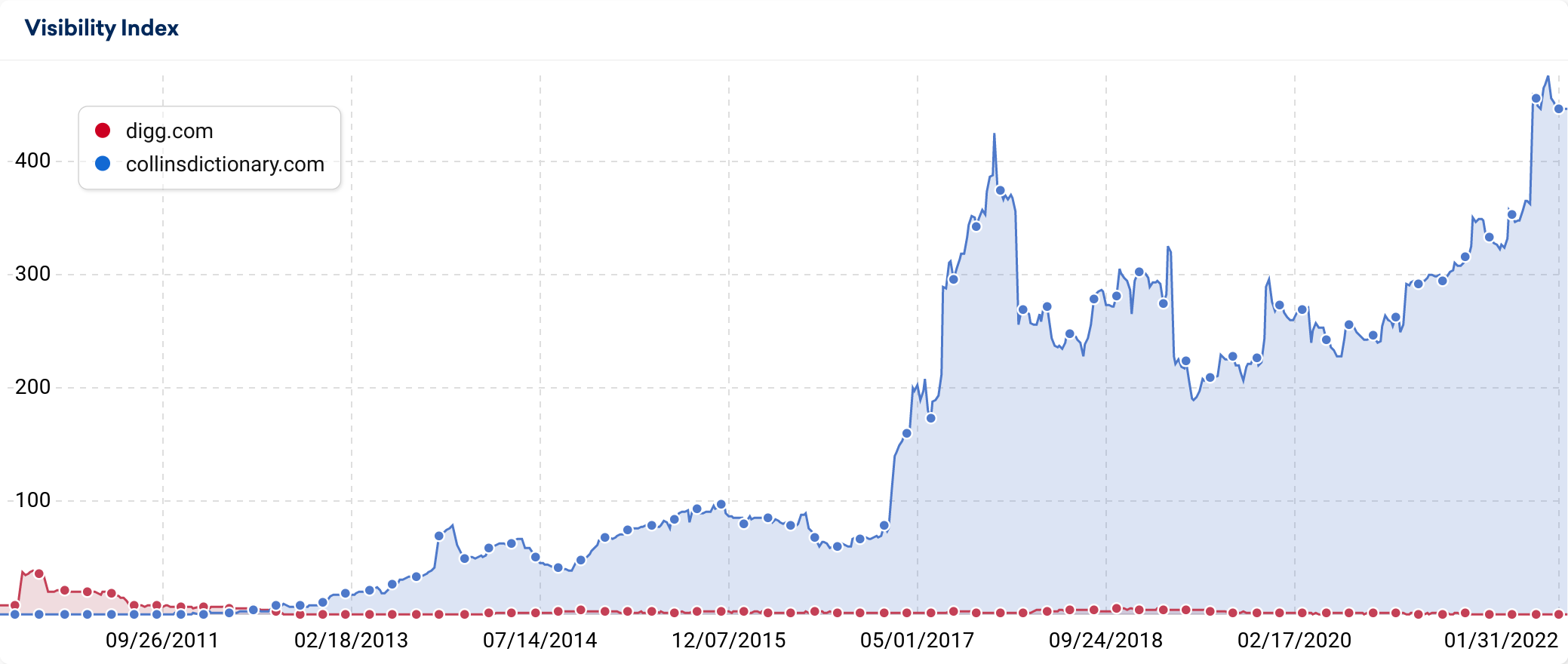
Conclusion
Measurability is of fundamental importance in search engine optimization. SEO based on reliable data, not gut feeling, is the right path to long-term success in Google search results. However, unrelated metrics such as Domain Authority (Moz), Authority Score (Semrush), and Domain Rating (Ahrefs) can lead to false security and therefore wrong decisions.
You can assess live data from all domains and grow your visibility with the Free SISTRIX Trial.

